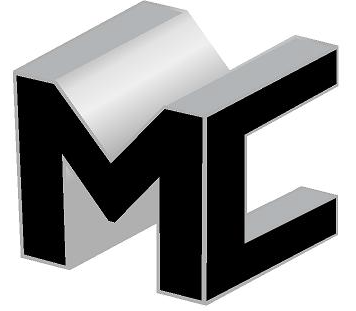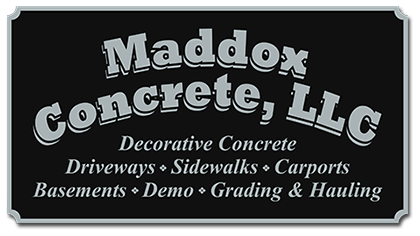
Summer is often seen as the perfect season for home improvement projects. With longer days, warmer temperatures, and less rainfall, it’s an ideal time for tackling outdoor renovations—especially those involving concrete. Whether you’re refreshing your driveway, revamping your backyard patio, or planning larger renovations, understanding how summer impacts concrete work is critical. From timing and curing to material behavior and mistakes to avoid, this comprehensive guide will walk you through what summer means for concrete updates and changes.
Why Summer Is Ideal for Concrete Work
Summer time concrete updating becomes popular largely due to the weather conditions that promote optimal curing. Concrete requires a certain range of temperatures to cure properly—ideally between 50°F and 85°F. During summer, daytime temperatures consistently fall within or above this range, allowing the concrete to set uniformly and gain strength efficiently. This reduces the risk of surface cracking that often occurs during colder months when freeze-thaw cycles wreak havoc on fresh slabs.
Moreover, drier conditions minimize moisture interference, which can otherwise delay projects. Contractors can work longer hours, and schedules become more predictable due to the lower likelihood of rain. Homeowners planning home concrete updates in the summer time often benefit from faster turnaround times, as materials cure more quickly and crews face fewer weather delays.
Another benefit is increased availability of seasonal help and construction crews. Many contractors hire additional labor during the summer months to handle the surge in demand, giving homeowners more flexibility in scheduling their projects.
The Science of Concrete in Heat
Despite summer being a favorable time for concrete projects, extreme heat poses its own challenges. When ambient temperatures rise above 90°F, the hydration process—the chemical reaction that allows concrete to harden—accelerates too quickly. This rapid curing can lead to poor strength development, surface defects, and reduced durability.
When water in the concrete mix evaporates faster than expected, it can result in shrinkage cracks or a powdery surface texture known as dusting. These conditions compromise the long-term structural integrity of your concrete installations. Moreover, improperly cured concrete may become more susceptible to scaling and chipping under mechanical stress or seasonal weather fluctuations.
To counteract these issues, professionals often add retarding admixtures that slow the setting process, use chilled water or ice in the mix, and schedule pours during cooler parts of the day—usually early morning or late afternoon. Protective coverings such as curing blankets or plastic sheets can also help retain moisture during the early curing stages.
Understanding these dynamics is essential for successful summer time concrete updating. The right techniques can make a significant difference in performance, aesthetics, and longevity.
Best Practices for Summer Concrete Projects
When undertaking home concrete updates in the summer time, following best practices ensures a quality finish and prevents costly rework. First and foremost, planning is critical. Since summer is peak season for concrete contractors, booking your project well in advance ensures better availability and competitive pricing.
Timing your pour is also key. Avoid pouring concrete during the hottest hours of the day to prevent premature drying. Early morning pours are typically ideal, offering cooler air and minimal sun exposure. Additionally, consider using shade structures or temporary awnings to protect fresh concrete from direct sunlight.
Pre-wetting the subgrade (the soil or base material beneath the concrete) can help control the evaporation rate, especially in dry climates. Similarly, applying a curing compound or using a water-spraying technique for the first 7–14 days post-installation ensures proper moisture retention.
Surface finishing should be done promptly, as concrete sets faster in warm weather. Delays can lead to poor texture and inconsistency. It’s also wise to consult with your contractor about whether your project would benefit from additives like fibers for reinforcement or sealants for added weather resistance.
Finally, be realistic about drying and usable times. Although concrete may appear dry within a day or two, it continues to cure and strengthen over several weeks. Avoid heavy traffic or placing furniture on the surface too soon, as it can cause permanent dents or marks.
Things to Avoid in the Summer When Updating Concrete Pathing
While summer offers ideal conditions for concrete work, certain missteps can jeopardize your project. One of the most common mistakes is ignoring the forecast. Sudden summer thunderstorms or high humidity can introduce moisture at critical stages, weakening the concrete’s surface. Always have protective coverings on hand to shield fresh concrete from rain.
Another frequent oversight is overworking the surface. When the top layer is repeatedly troweled or brushed after it has started to set, it can lead to delamination—where the surface peels away from the underlying concrete. This is particularly common in hot weather, where the surface sets faster than expected.
Using too much water in the mix or during the finishing process can also cause problems. Excess water increases the risk of surface scaling and reduces the concrete’s overall strength. It may seem counterintuitive, but adding more water to compensate for fast drying actually weakens the final product.
Neglecting proper expansion joints is another pitfall. As concrete heats and expands in the summer, insufficient spacing can lead to cracking. Make sure your pathing project includes well-placed control joints to manage expansion and contraction naturally.
Lastly, avoid DIY mistakes without proper knowledge. Concrete work may seem straightforward, but it requires technical know-how and experience. Misjudging mix ratios, setting times, or curing processes can turn a simple pathing project into a costly replacement.
Preparing for the Seasons Ahead
One of the often-overlooked benefits of summer time concrete updating is its role in preparing your home for seasonal changes. A well-installed concrete path, patio, or driveway completed during the summer will be fully cured and ready to withstand the rigors of autumn rains and winter freezes.
Applying a penetrating sealer after curing can protect your concrete against water infiltration, deicing salts, and freeze-thaw damage. This protective layer reduces the chances of cracks and surface wear during colder months. Summer is also the perfect time to evaluate existing concrete installations for damage accumulated over the previous winter and make repairs before the cycle begins again.
Homeowners can also take this opportunity to enhance curb appeal. Stamped patterns, colored concrete, and decorative finishes are easier to execute in stable summer weather. Whether you’re prepping your home for resale or long-term enjoyment, thoughtful summer updates to your concrete areas can dramatically improve both function and appearance.
Beyond aesthetic upgrades, safety should also be a consideration. Repairing uneven slabs or cracks reduces trip hazards, while adding texture to high-traffic areas improves slip resistance—a valuable feature when leaves or snow create slippery conditions in the fall and winter.
Conclusion
Summer presents a strategic opportunity for tackling concrete projects around your home. The season’s warm, dry weather provides favorable conditions for curing, scheduling, and completing concrete work efficiently. However, this does not come without challenges. Excessive heat, improper timing, and poor practices can all lead to subpar results if not carefully managed.
By understanding the science of concrete in heat, following proven best practices, and avoiding common summer mistakes, homeowners can ensure successful updates to their walkways, patios, and driveways. These investments not only enhance your home’s visual appeal but also improve functionality, safety, and seasonal durability.
Whether you’re planning a complete redesign or minor repairs, taking the right approach to home concrete updates in the summer time ensures your improvements will stand the test of time. So grab that blueprint, consult a reputable contractor, and take advantage of the sunshine—the perfect concrete canvas awaits.
Need Concrete Contractors in Sanford, NC?
We are the area’s best concrete company. We specialize in concrete finishing of all types of concrete for residential and commercial customers. Our services include pavement, driveways, footings, sidewalks, decorative concrete, hauling, demolition, and property grading. We’re fully insured. Contact us today for quality workmanship and service.

